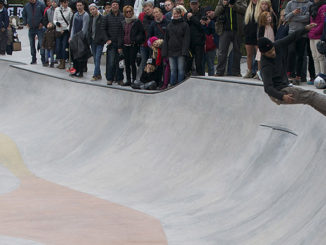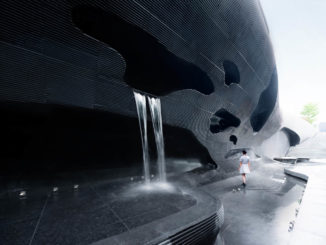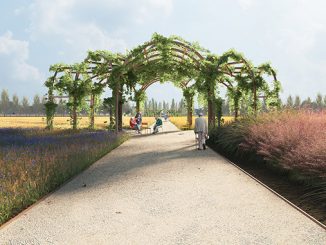Winner of the 2021 WLA Student Awards – Award of Excellence – Concept – Analysis & Planning
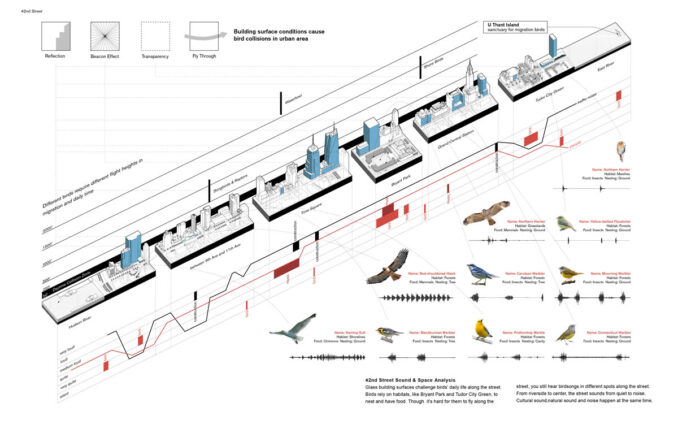
Right now, we can barely hear the sounds of birdsong in the urban condition. Birds find it hard to locate suitable habitats inside the crowded city. Another fact is that their “song” is covered by loud, low-frequency urban noise. Especially when we stepped into the Anthropocene, the relentless expansion of industrial and urban areas makes the earth sound much louder than it did during other times in the earth’s history. Since Rachel Carson’s important work, “Silent Spring”, sound has started to have a tight connection with the health of our surrounding environment. How the environment sounds, in some ways, reflects the ecological quality of a place. At the same time, people who live in urban areas are also suffering from noise which damages people’s health. It’s an interesting and challenging task to consider sound as the main media to shape and create an ecological landscape that can improve and fit into the new types of urban ecology.
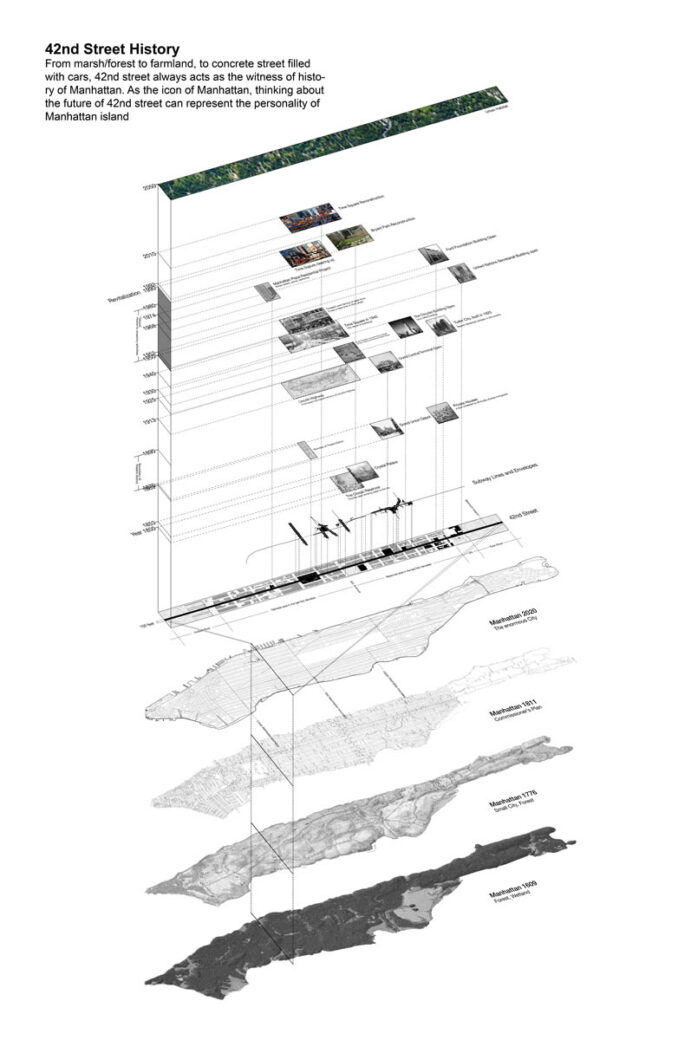
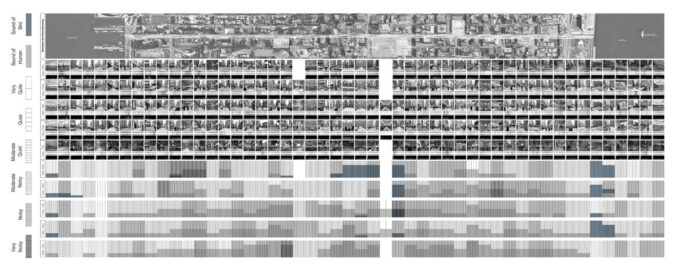
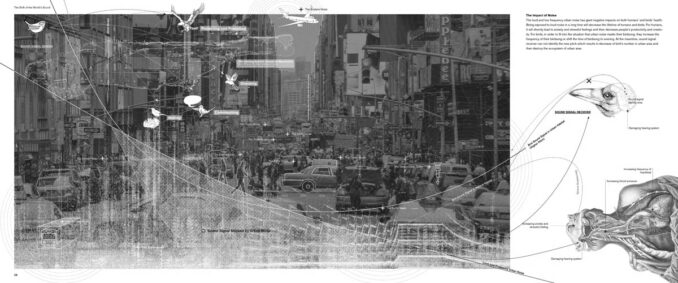
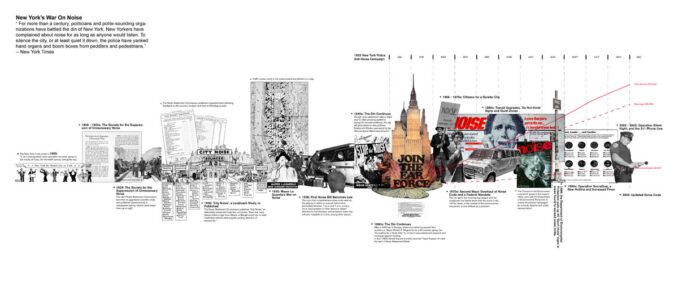
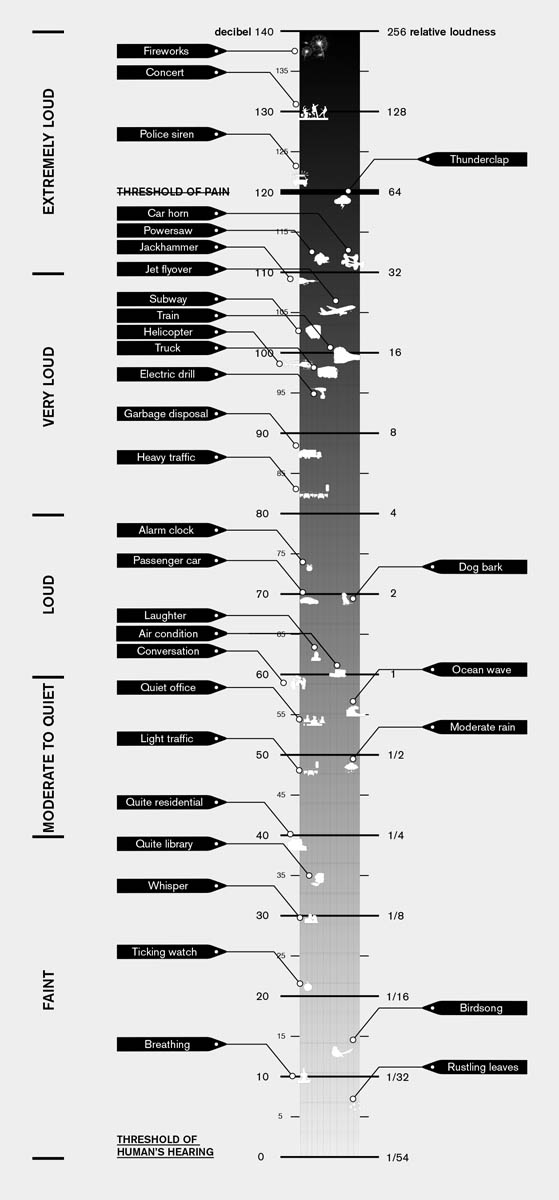
This proposal aims to draw people’s attention to our surrounding acoustic environment and shift people’s awareness from “hearing” to “listening”. In urban areas, to enrich our living experiences, people choose to get rid of noisy environments. I believe landscape architecture always has the power to connect human’s different senses with our environment. As the most dynamic and abstract phenomenon, sound has the potential to guide landscape spatial design and modify our ecological system. The investigation focuses on 42nd Street as a primary study area historically one of the most iconic streets in the midtown of Manhattan, connecting the Hudson River and East River.
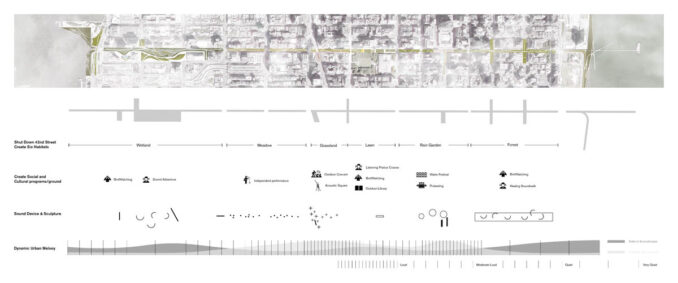
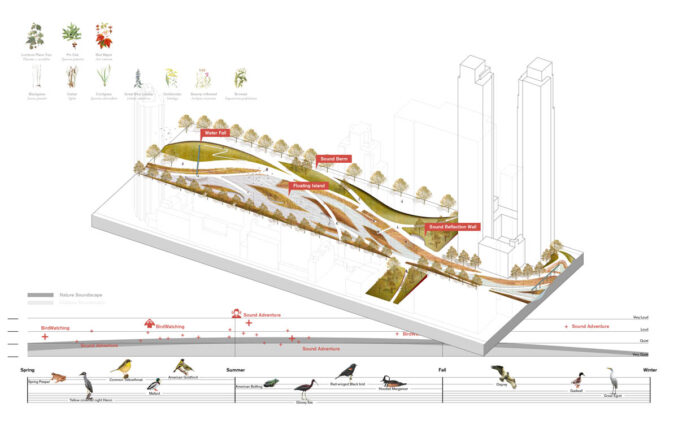
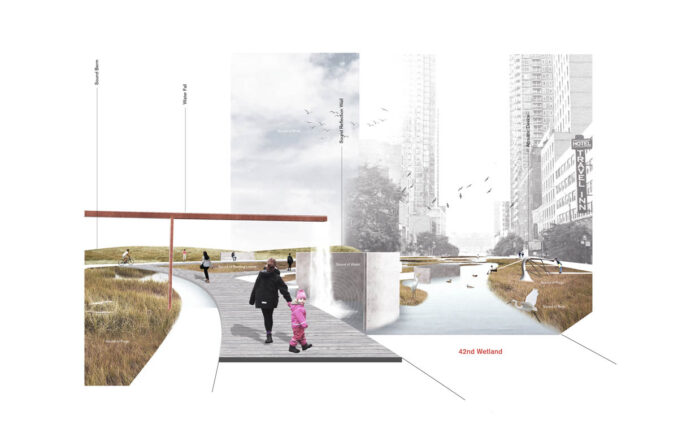
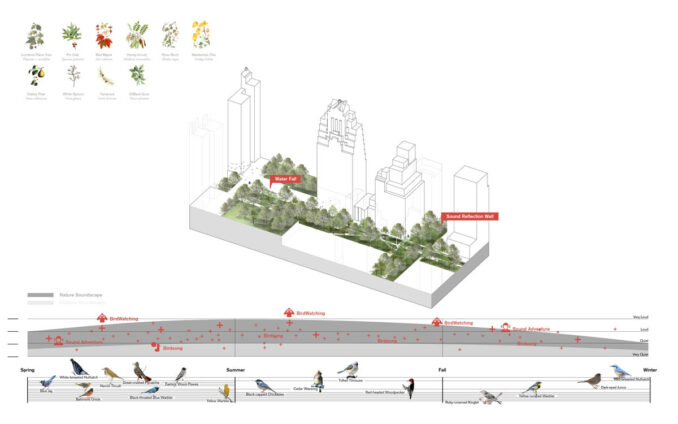
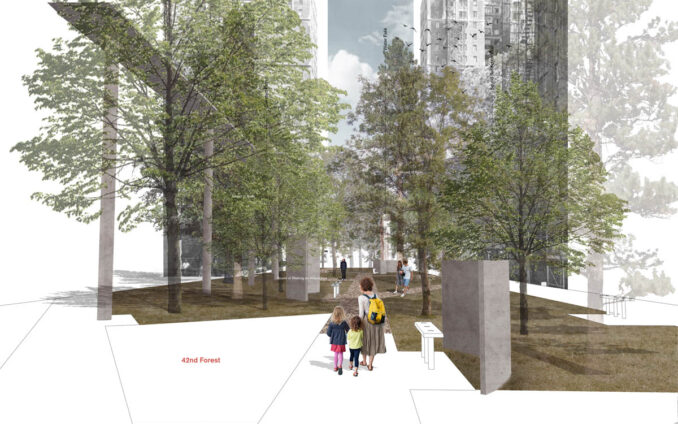
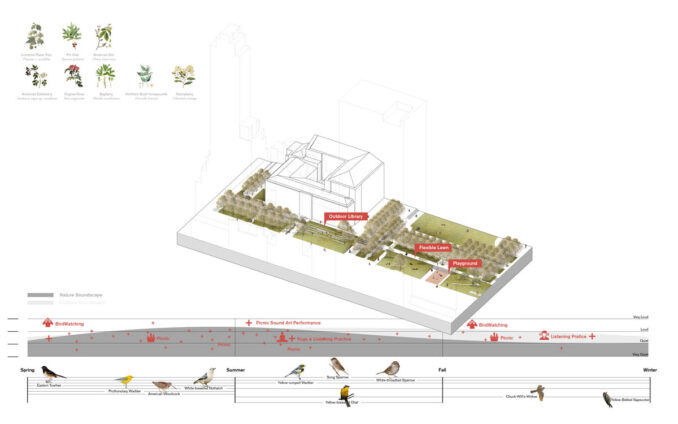
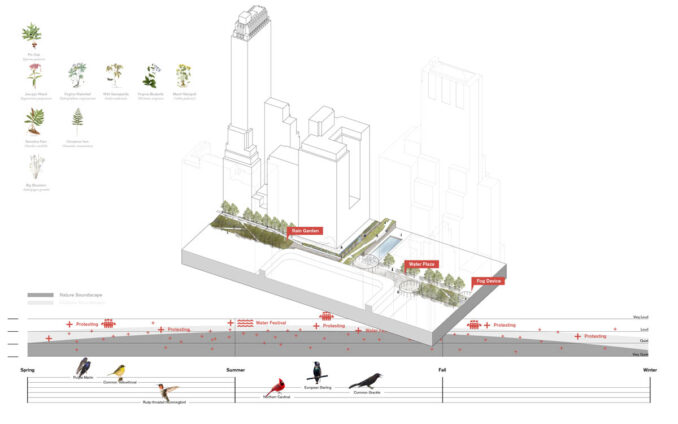
As a witness of Manhattan’s history, 42nd street combines historic urban fabric and innovative ground. Different types of space along 42nd Street create rich ecological and cultural soundscapes. These spaces include the green spaces of Tudor City Green, Bryant Park, Hudson River Waterfront and the vibrant human realm of Times Square and Grand Central Station. They work well together, but the balance between them is losing ground since humans take the main role in the environment. This project strategically turned the noise issues into opportunities for social and cultural improvement and works to rebuild an urban ecology by rethinking the relationship between sound and environment and between sound and perception. Studying the dynamic relationship between sound, city, people, and wildlife can produce a flexible strategy that provides suitable habitats, public realms, cultural programs.
42nd Soundscaping
Student: Chao Li, Rhode Island School of Design
Supervisor: Michael Blier
Images Credit: Chao Li

